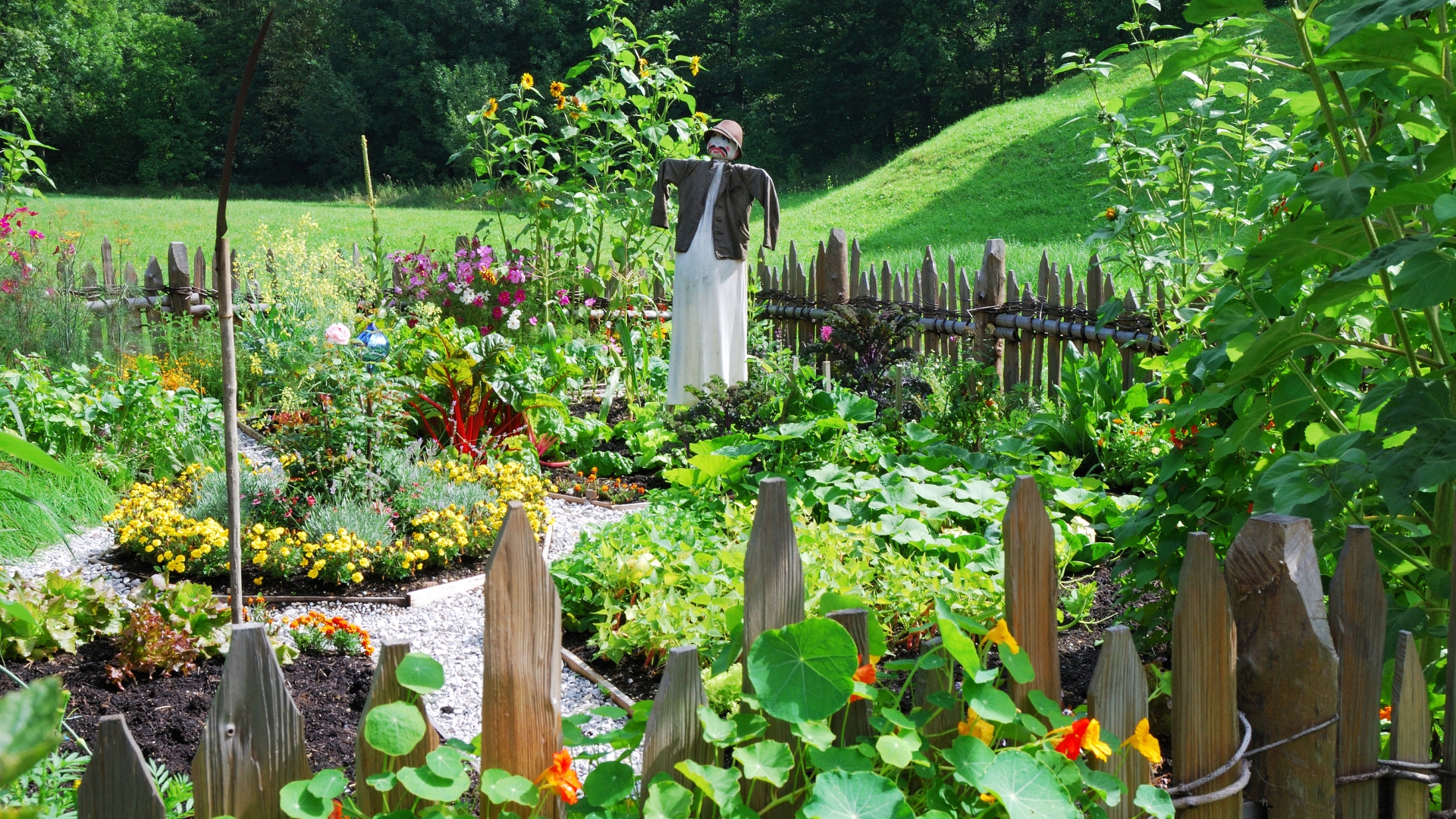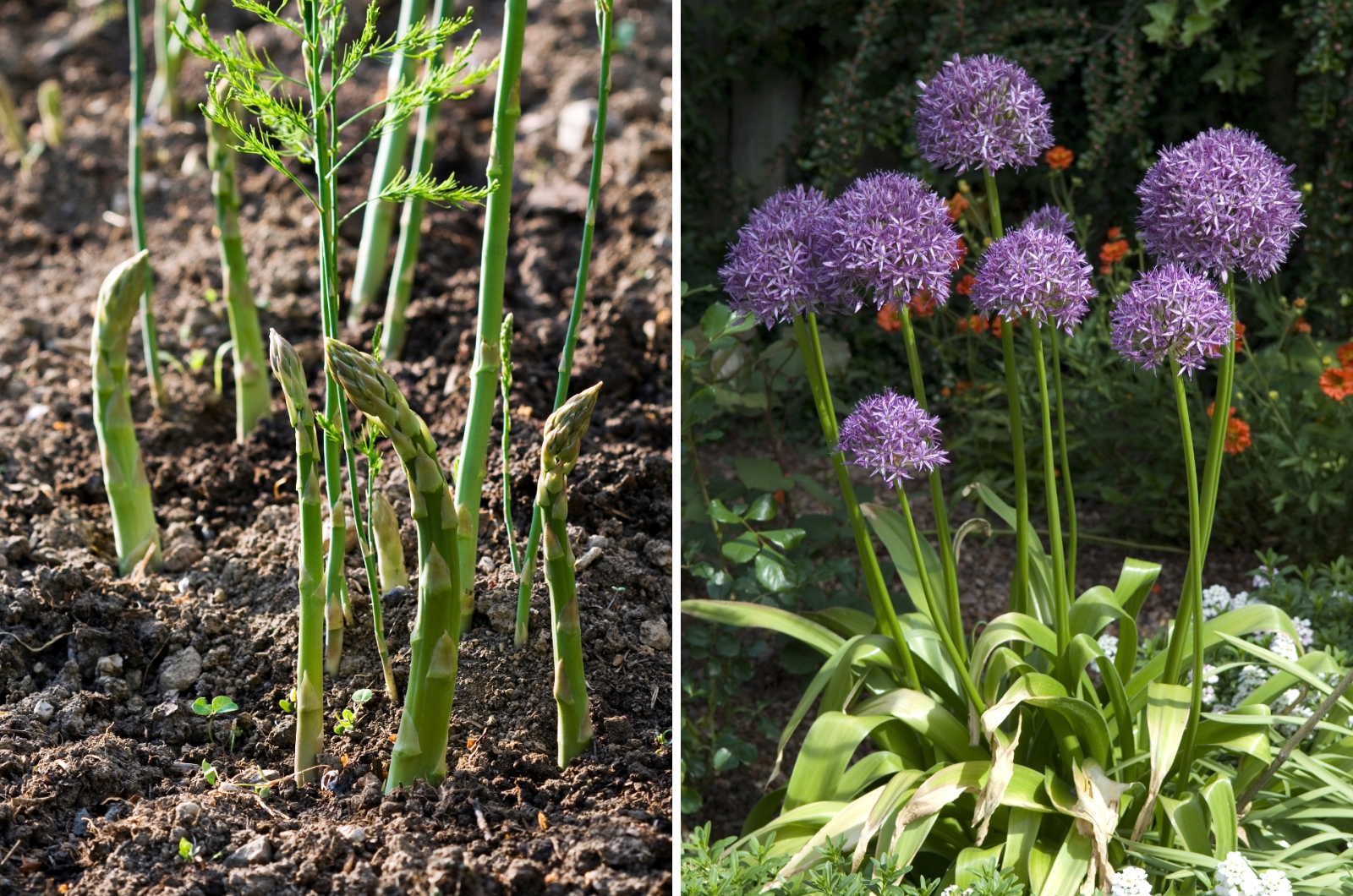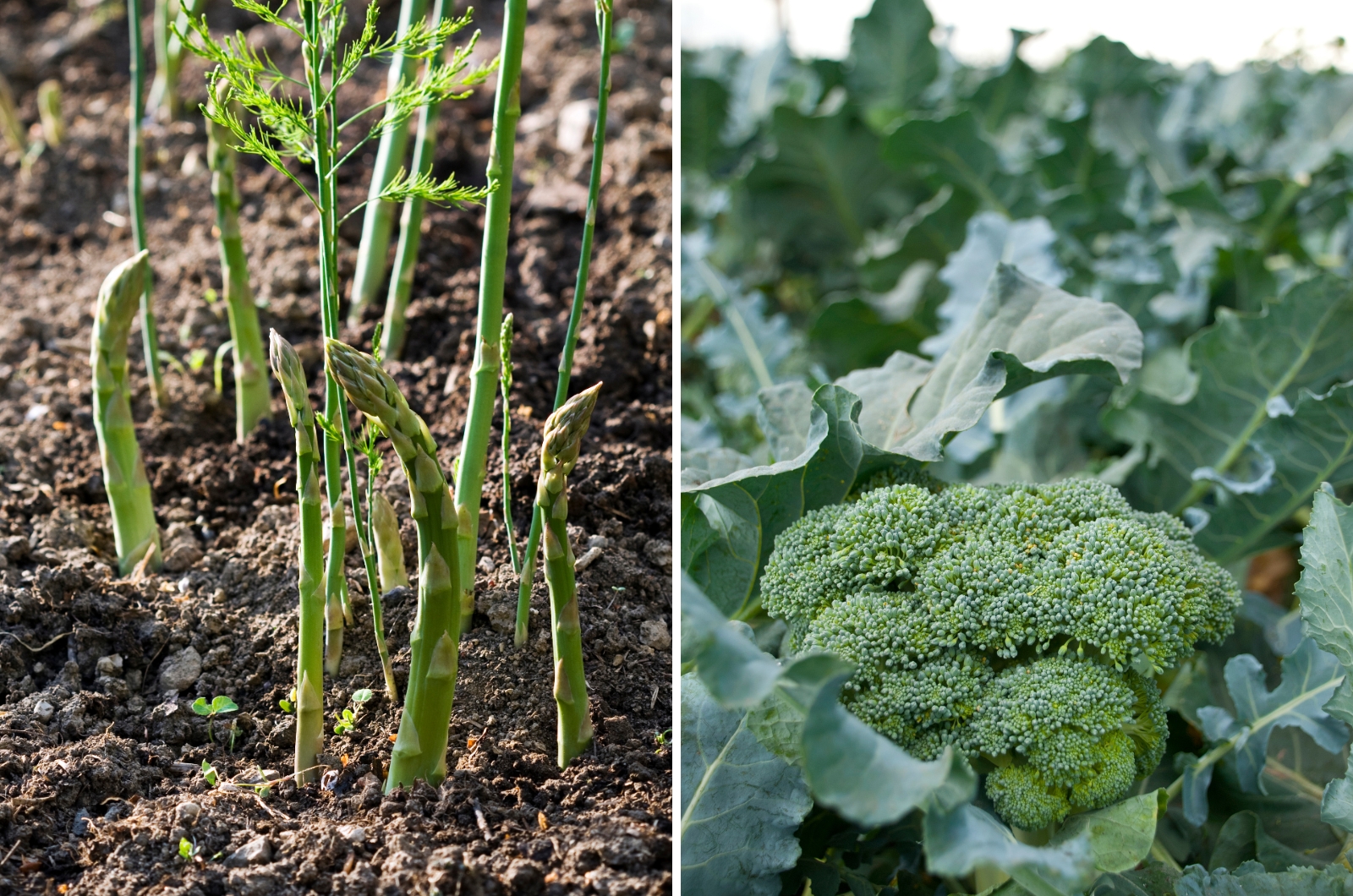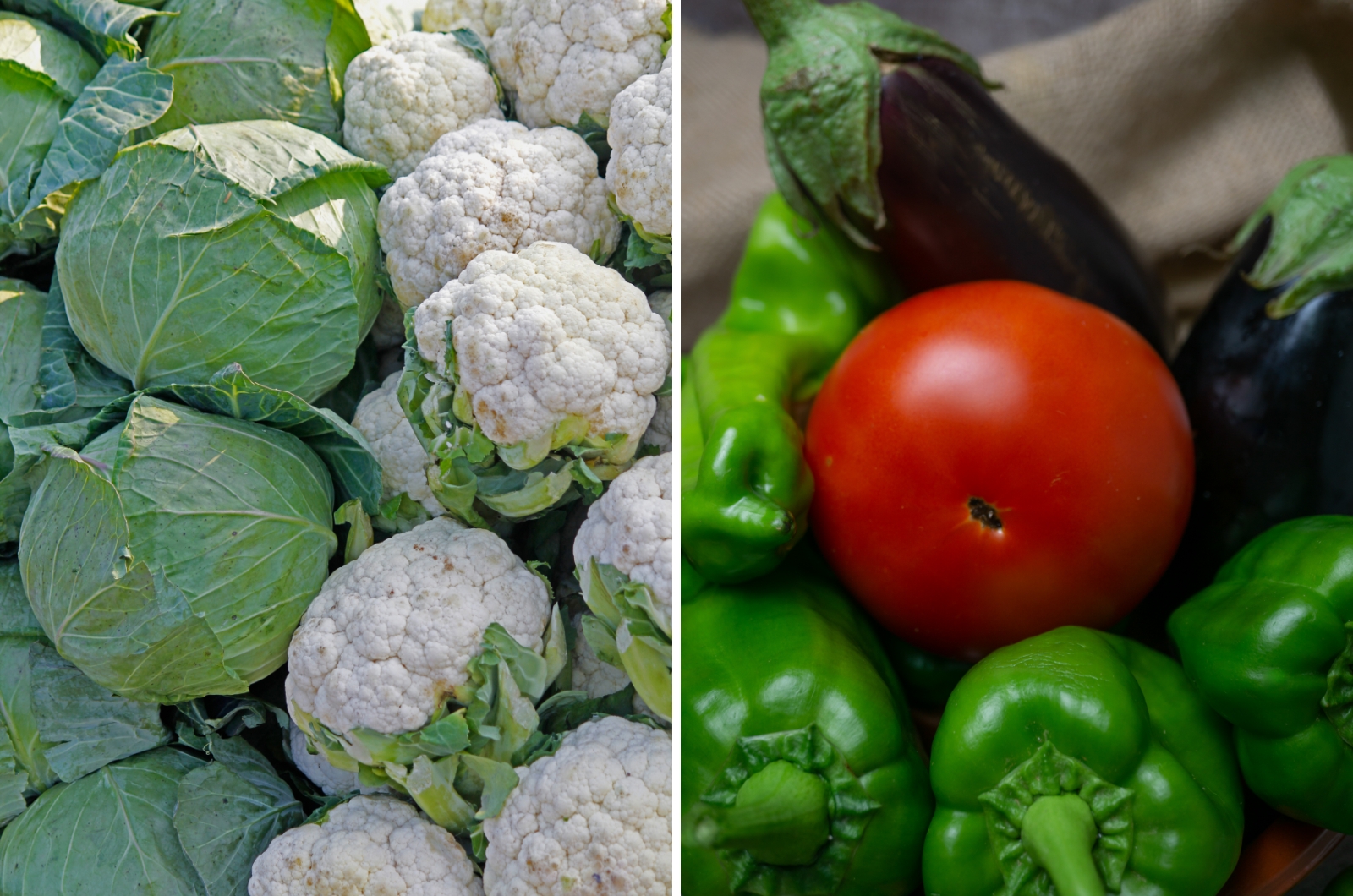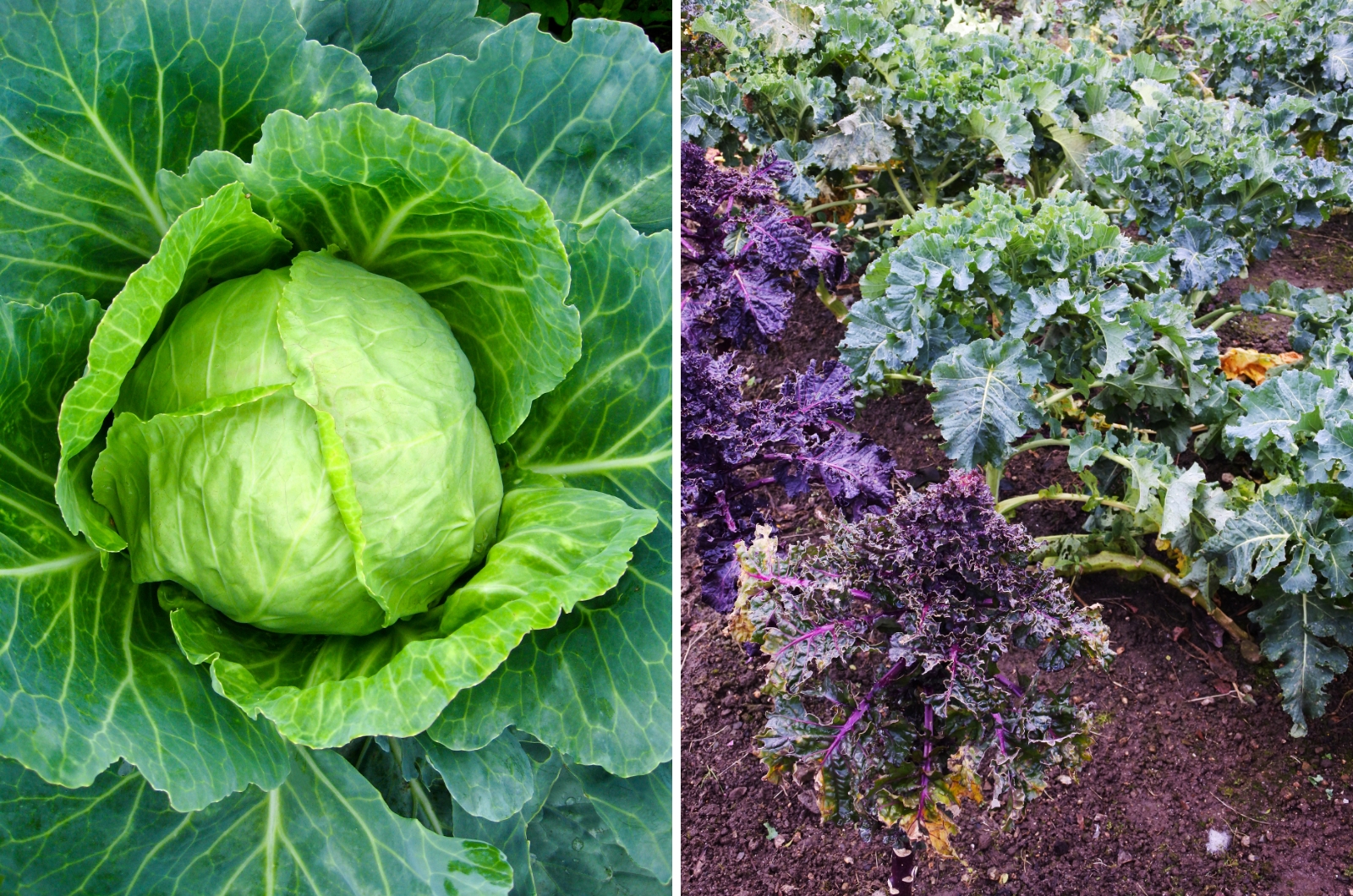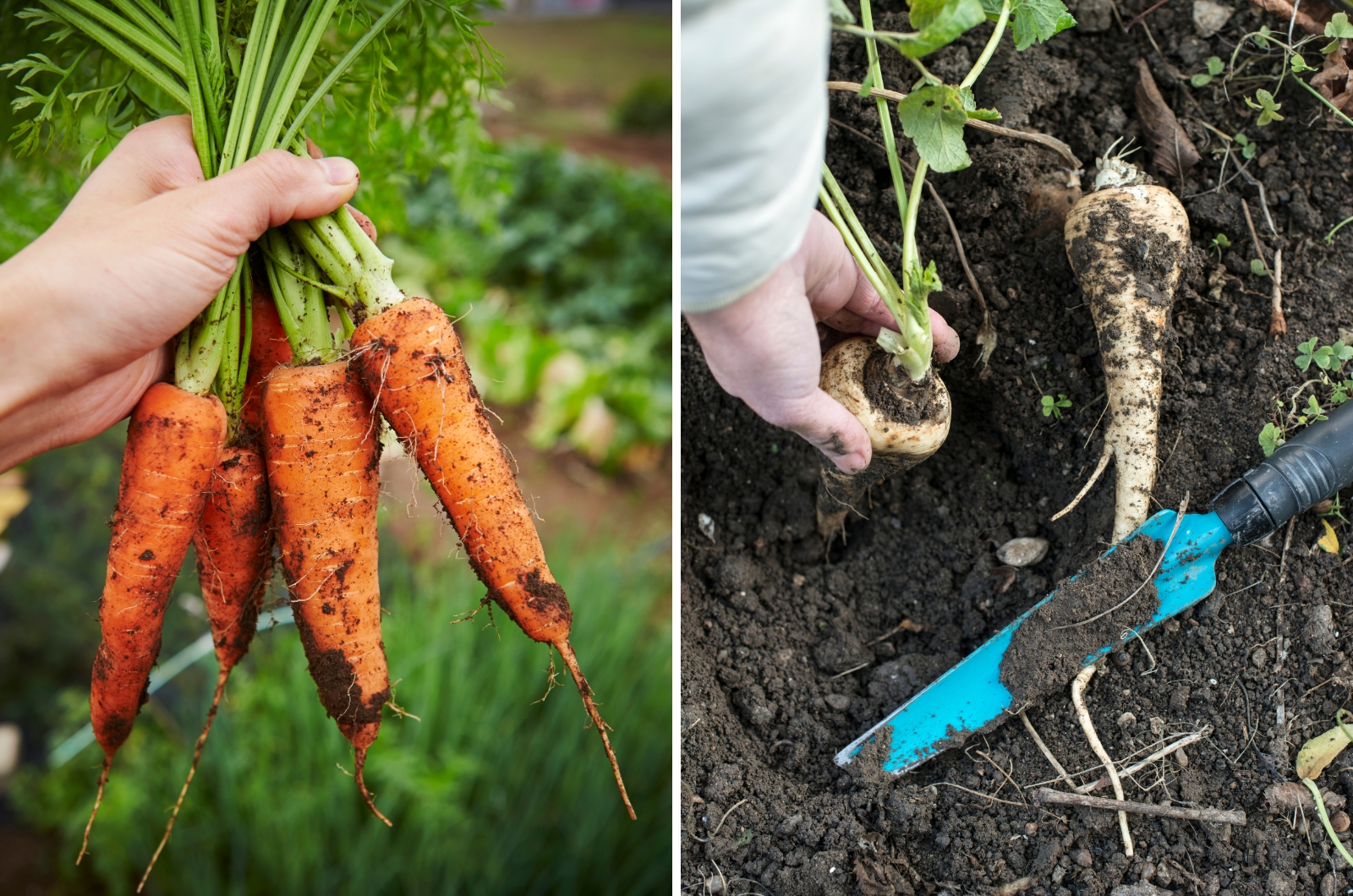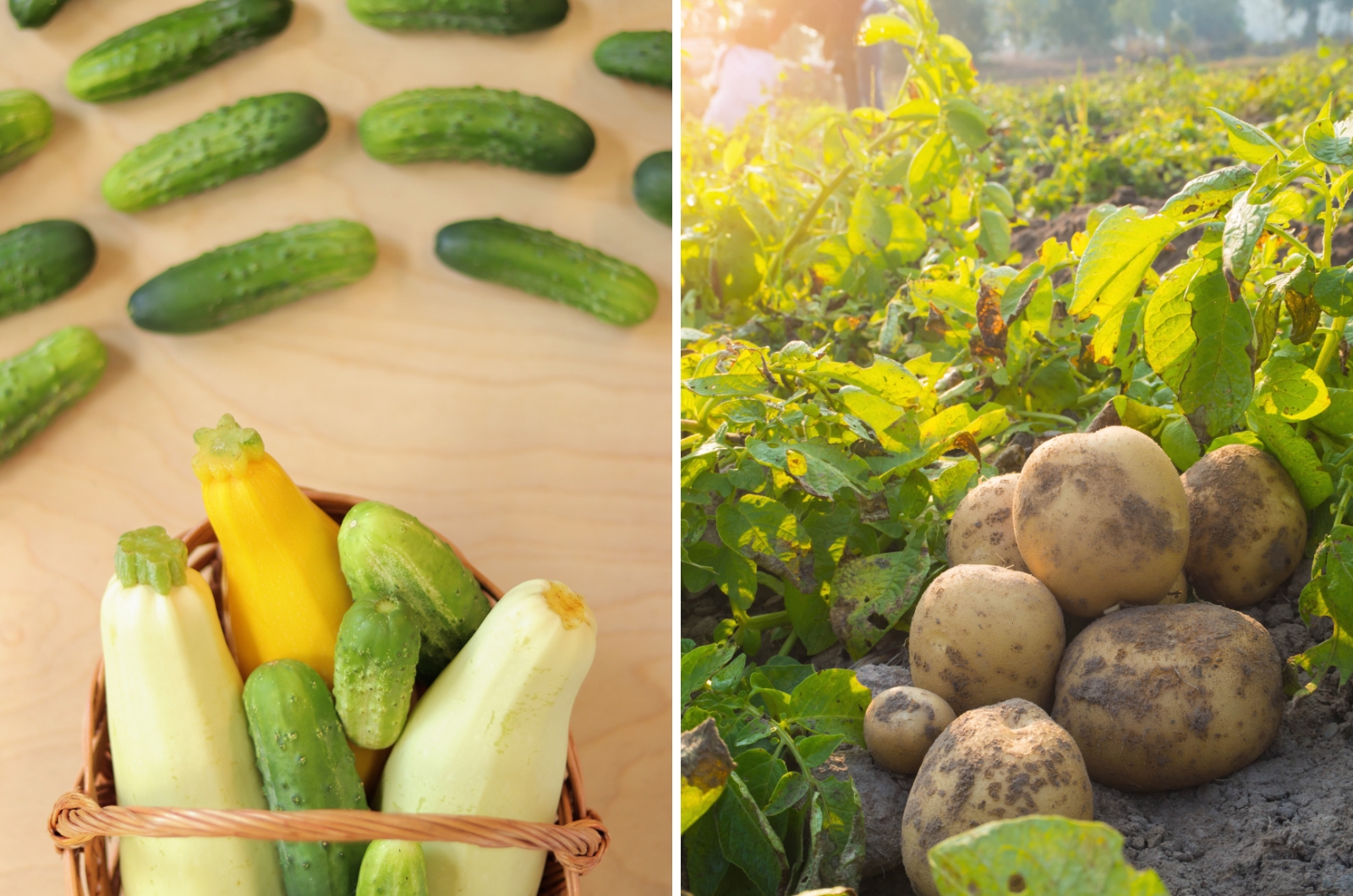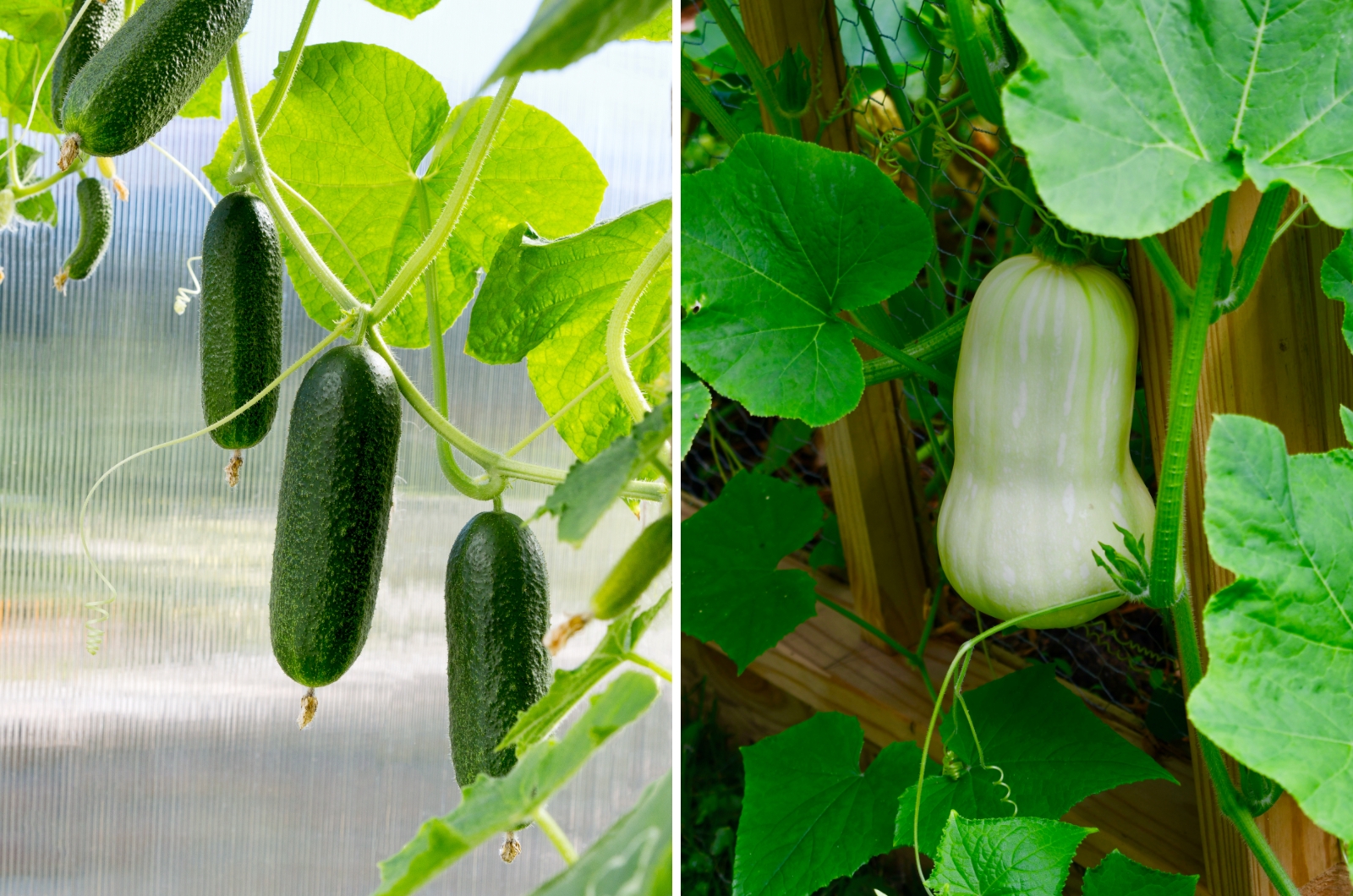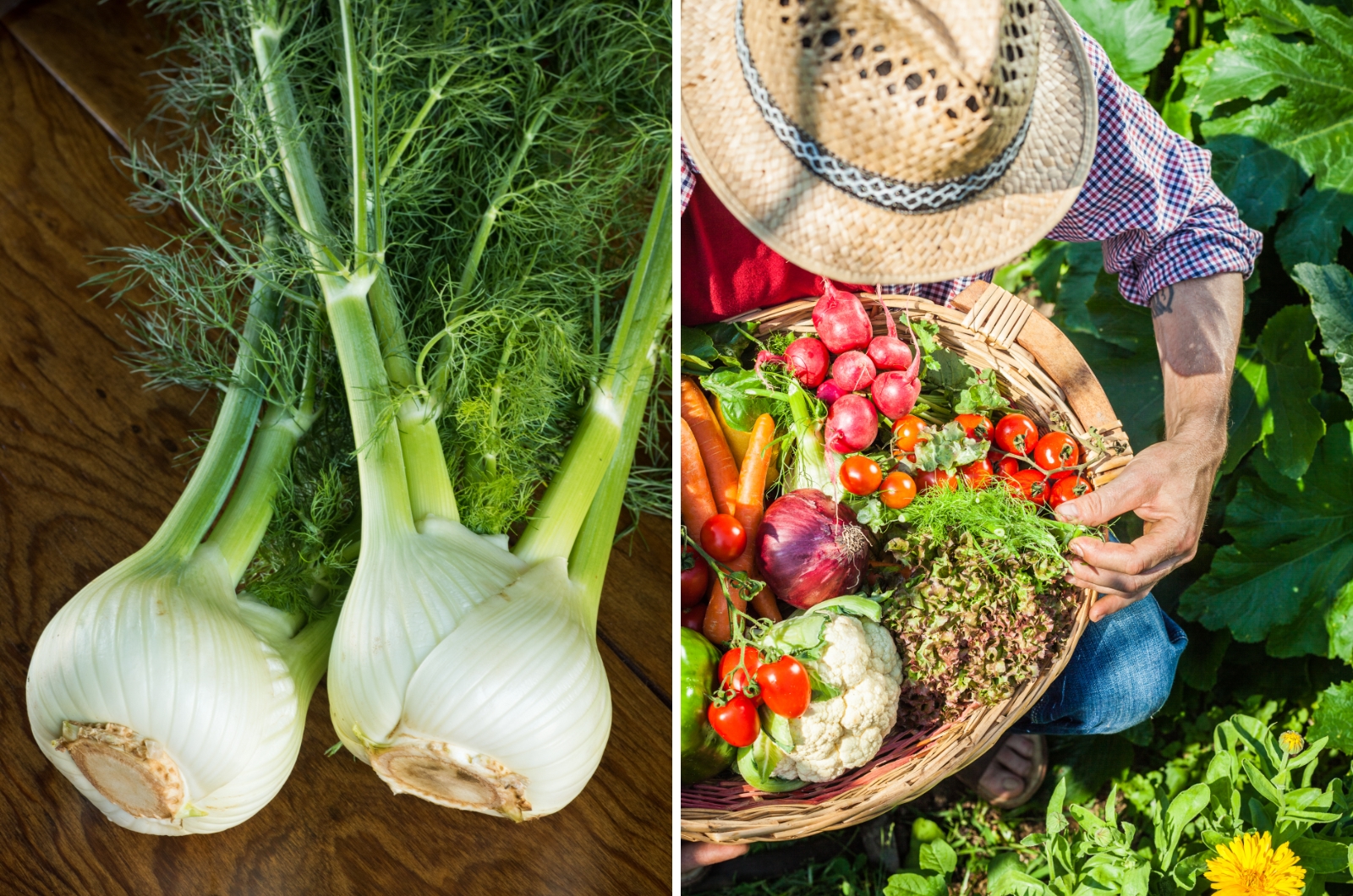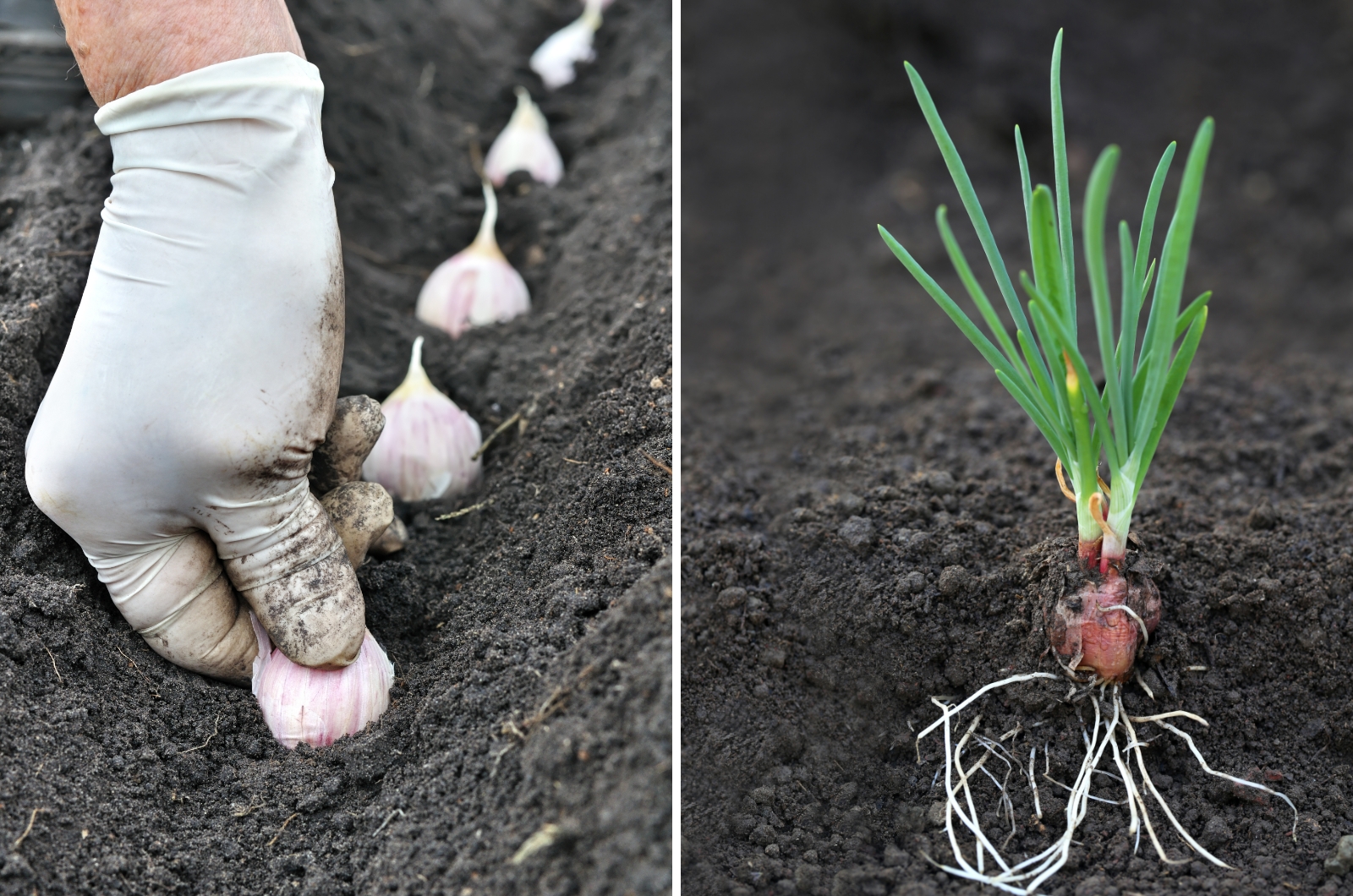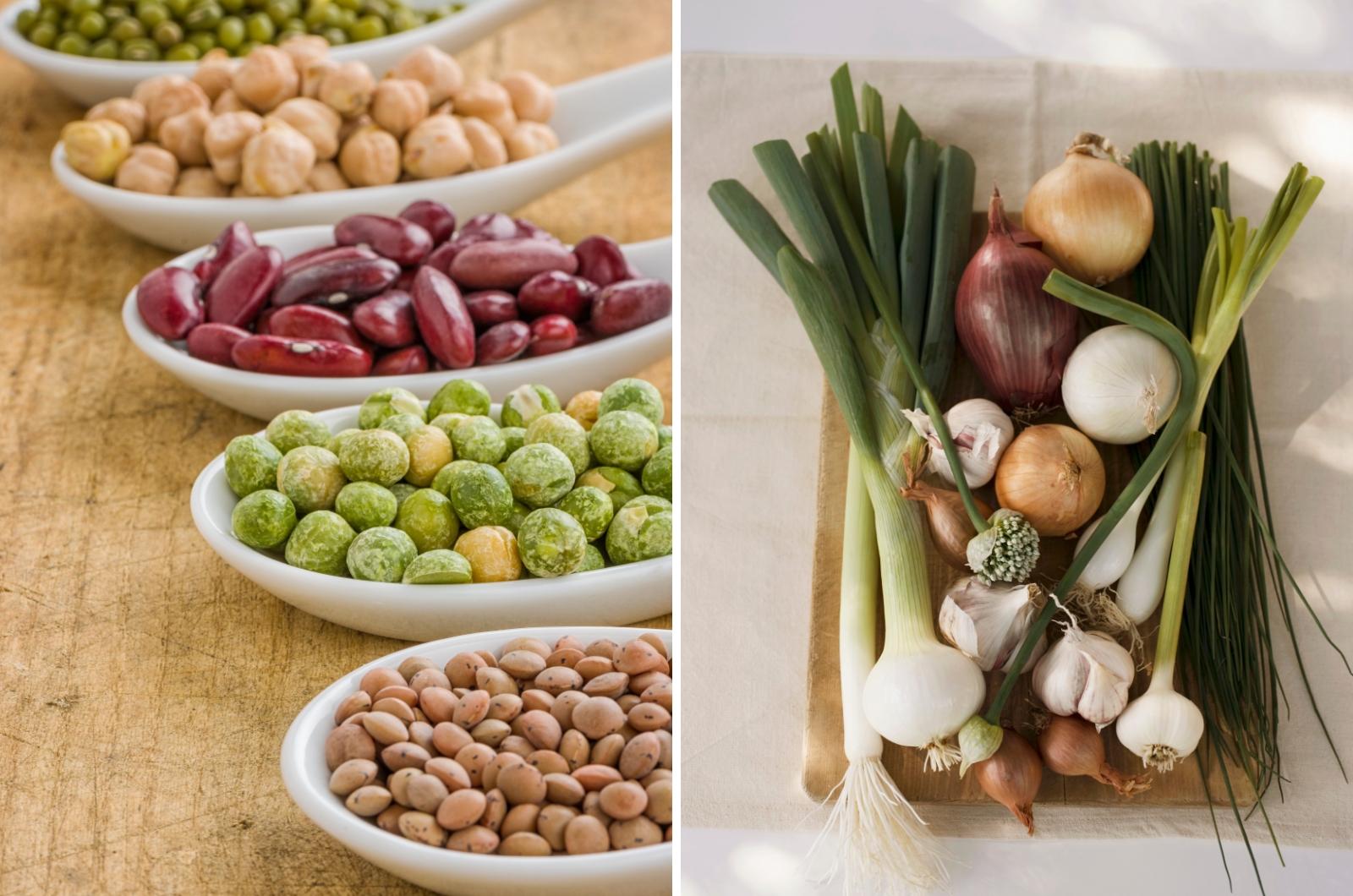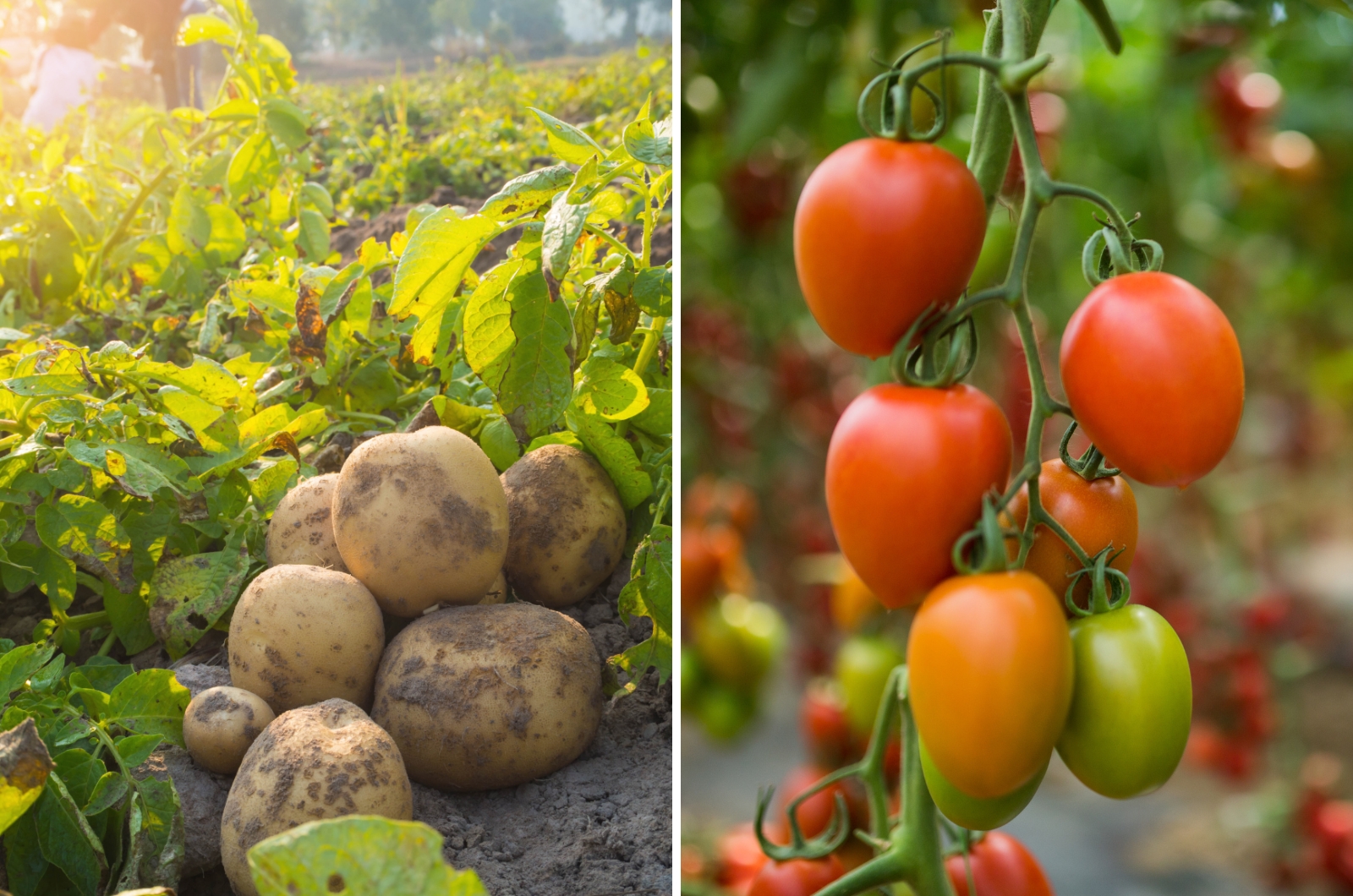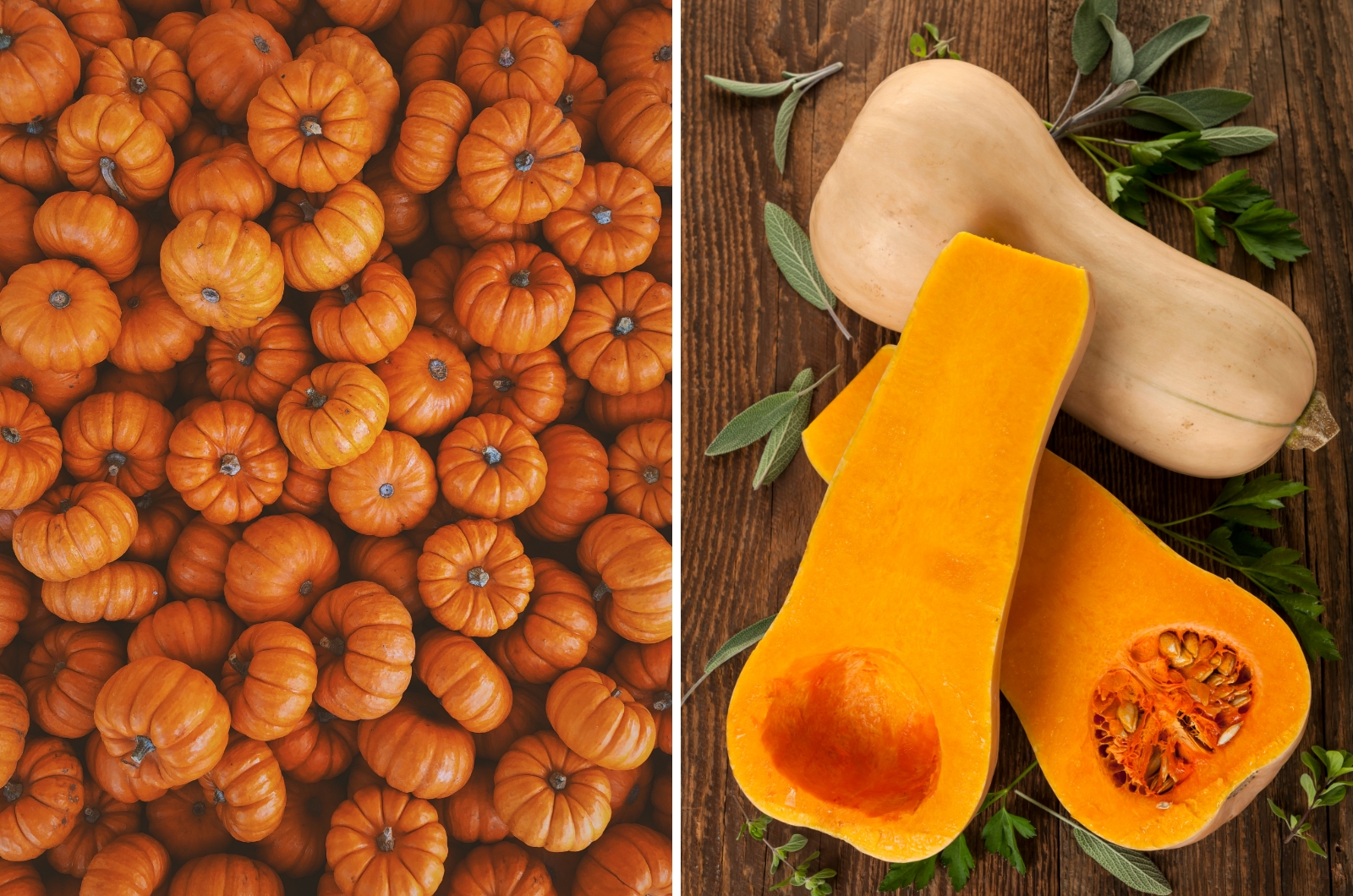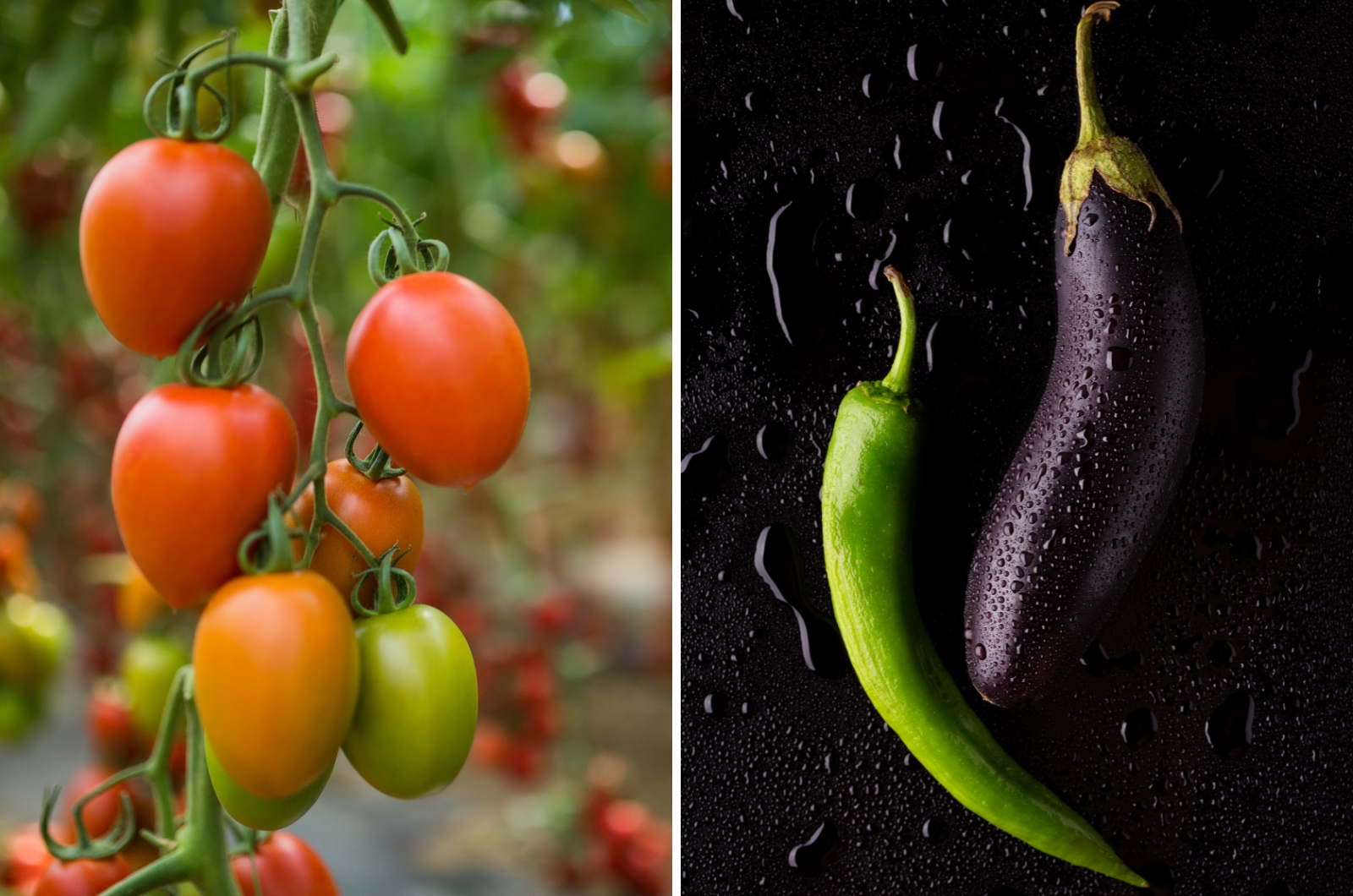Companion planting is a great way to promote healthy growth, improve the flavor of certain plants, repel pests, and attract beneficial bugs.
But if done incorrectly, it can land you with a lot more work than there should be. Some pairings attract pests, others lead to stunted growth, and some impact the overall taste of the vegetables.
Luckily, you can avoid this! You only need to steer away from growing these vegetables side by side and your garden will be fine!
Let’s get started!
#1 Asparagus & Alliums
Growing asparagus and alliums together isn’t the best thing for either crop. Alliums are allelopathic and will inhibit the growth of asparagus.
The good news is that there are other companion plants for asparagus you can turn to.
Do pair alliums with: Nightshades and leafy greens
#2 Asparagus & Broccoli
Another combo I’m not a fan of is asparagus and broccoli. Both plants are heavy feeders and need a constant supply of nutrients to grow.
Pair them and you’ll find yourself feeding them all the time. And if you neglect this chore, you risk having one variety underdeveloped. Or worse, both of them will yield a mediocre crop.
Instead, learn how to plant and grow asparagus on its own and pair it with vegetables that won’t compete with it.
Do pair asparagus with: Nightshades
#3 Brassicas & Nightshades
Growing brassicas and nightshades isn’t the best idea. All of these plants are heavy feeders that need humus-rich growing medium.
They can compete for nutrients, light, and moisture, and overcrowd the area. If you still want to grow them together, give them an ample amount of space and fertilize them often.
Do pair brassicas with: Buckwheat, carrots, legumes, spinach
#4 Cabbage & Other Brassicas
Growing cabbage near other brassicas (broccoli, Brussels sprouts, kale) isn’t a great idea. All these plants are susceptible to cabbage loppers.
A large number of brassicas in a single area may attract more of these pests and cause them to decimate your veggies.
Interplant brassicas with their favorite companions and learn more about the cabbage growing stages, and you’ll increase your yield by and large.
Do pair cabbage with: Buckwheat, carrots, legumes, spinach
#5 Carrots & Parsnips
Both carrots and parsnips belong to the same family. That means they share the same diseases and pests.
Growing them together will increase the risk of these issues and cause them to spread more.
There are many other carrot companion plants you can consider growing instead of parsnips.
Do pair carrots with: Brassicas, legumes, nightshades (except potatoes)
#6 Corn & Tomatoes
Another bad pair are corn and tomatoes. These two plants have the same growing requirements. But does that make them inherently bad companions?
Well, both corn and tomatoes are heavy feeders and can compete for nutrients, moisture, and light. You’d be much better off trying the three sisters companion planting method.
If you still want to grow tomatoes and corn together, you can, you just have to ensure each plant has enough resources to thrive.
Do pair corn with: Brassicas, cucurbits, legumes
#7 Cucurbits & Potatoes
Growing cucurbits and potatoes isn’t the best option. Both of these plant varieties need a lot of food and will compete for nutrients.
When the harvesting time comes, you may end up with tiny potato tubers and deformed zucchini or cucumbers. Nobody wants that!
Do pair cucumbers with: Beets, carrots, corn, legumes, radishes
#8 Cucumbers & Squash
There are great cucumber growing tips, but none of them includes planting this veg near squash.
Why? Because they come from the same family. They are both susceptible to similar pest infestations and disease infections and can increase their spread.
Also, both of these plants need plenty of room and a lot of nutrients. If you don’t want to dedicate your entire garden to a single cucumber and squash plant, you’ll be better off growing them separately.
This combination can deplete the soil of nutrients quickly, so you will have to fertilize them often. It seems like a lot more work than it should be!
Do pair squash with: Corn, legumes, radish
#9 Fennel & Most Other Veggies
When we look at the companion planting chart for herbs, we see that fennel doesn’t do well with most other plants.
That’s because it is allelopathic and will stunt the growth of its companions.
Do pair fennel with: Weeds (it can inhibit their growth and reduce the amount of work you have to do in your garden). (1)
#10 Garlic & Other Alliums
Garlic and other alliums are all susceptible to powdery mildew, among other onion diseases.
Growing these crops close together will increase their risk of infection and may reduce your yield.
You should also rotate these crops. Don’t grow alliums in the same spot year after year because the diseases that afflict them may linger there!
Once you know when to plant garlic and what to pair it with, you’ll see great results.
Do pair garlic with: Nightshades and leafy greens
#11 Legumes & Alliums
You should never combine legumes and alliums together. The latter (onions, leeks, garlic) have allelopathic properties due to phenol and sulfur. (2)
That means they will inhibit the growth of nearby plants. What’s worse, alliums contain allicin – a compound that inhibits the urease found in legumes. (3)
Legumes need urease to fix nitrogen, and without this process they lose their sole purpose of companion planting.
The good news is that there are many companion plants for peas and other members of the legume group.
Do pair legumes with: Brassicas, corn, cucurbits, nightshades, tomatoes
#12 Lettuce & Celery
Celery is a terrible companion for lettuce. It attracts whiteflies and aphids, both of which can wreak havoc on your lettuce.
If you don’t want to inflict damage on both crops, plant them in separate locations. You can even consider growing lettuce indoors!
Do pair lettuce with: Asparagus, cucurbits, legumes, root crops, spinach, tomatoes
#13 Potatoes & Tomatoes
Even though there’s a cool method of 2-in-1 potato and tomato growing, you should know about the risks this pairing has.
Both of these vegetables belong to the same family. That means they are susceptible to the same pests and diseases. Growing them in the vicinity can increase the spread of these issues.
Do pair potatoes with: Brassicas, corn, legumes
#14 Pumpkins & Summer Squash
Pumpkins and squash belong to the same family and are susceptible to the same pest infestations and diseases. Powdery mildew, hairy back legs, squash bugs, and vine borers are all things that can afflict them.
But an increased risk of these issues isn’t the only thing that’s wrong with this combo. These two plants will cross-pollinate. That means you’ll end up with seeds that don’t resemble either parent.
The end product may be mediocre and produce fruit with a less-than-satisfactory flavor.
Luckily, there are pumpkin companion plants you can try out!
Do pair pumpkins with: Corn, legumes, radish, tomatoes
#15 Tomatoes & Other Nightshades
Planting tomatoes near other nightshades such as eggplants, peppers, and potatoes isn’t ideal.
All these plants attract tomato hornworms – eggplants in particular. Growing these crops close together increases the chance of infestation and the risk of losing an entire harvest.
The good news is that there are many companions for tomatoes that are perfect matches.
Do pair tomatoes with: Asparagus, carrots, cucurbits, legumes, radishes
References:
1. Nourimand, N., Mohsenzadeh, S., Teixeira da Silva, J. A. , & Saharkhiz, M. J. (2011). Allelopathic Potential of Fennel (Foeniculum vulgare Mill.). Global Science Books.
2. Yousaf, Z. et. al. (2012). Allelopathic Plants: 24. Genus Allium L. Allelopathy Journal.
3. Mathialagan, R. et. al. (2017). Evaluation of Allicin as Soil Urease Inhibitor. Procedia Engineering.

